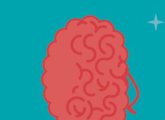It’s relatively easy to come up with a list of topics to cover in the computing curriculum, but a collection of terms such as Algorithms, Loops, Flowcharts, Pseudocode and so on is not exactly enticing to anyone who not only does not understand what those things are, but also doesn’t see why they would want to. The renewed interest in economics, for example, can almost certainly be traced in part to the publication in recent years of a number of books and articles dealing with the economics of everyday life. So why not try a similar approach to teaching computing, in the form of a few overarching themes? After all, the Programme of Study is rather skeletal, leaving it to teachers to put the flesh on the bones. If you decide to adopt the approach outlined below, by all means compile a checklist of topics for your own and your department’s guidance; you will probably discover that the required content will be covered as a matter of course.
The following suggested themes are not mutually exclusive – for example, a natural combination would be problem solving and location – and of course, they merely scratch the surface. You can probably think of quite a few more which will appeal to students!
1. Problem solving
In this approach, either the teacher or the students themselves identify problems to be solved. The latter is preferable in my opinion, because it is likely to ensure a greater commitment. However, there are two caveats:
First, students might not know how to collaborate to tackle a problem, so presenting them with a dilemma to solve in a limited time (two or three weeks, say) would give them some practice.
Secondly, it would be a good idea to establish a process for ensuring that the problems are neither ones that can be solved in one lesson nor something that would take years!
To avoid these extremes, consider giving learners a list of prompts, or use Half-Bakery (bit.ly/ TFHalfBake) – a website on which people post ideas and invite others to discuss them – as a starting point. Be aware, some of the language used on the site is likely to be inappropriate, so it’s safer to use it to kickstart your own suggestions, rather than encouraging students to access it directly.
Other useful websites to look at include Apps for Good (bit.ly/TSApps4Good), Action Learning (bit.ly/ TSAction) and Coolest Projects (bit.ly/TSCool).
2. Location, location
Another option is to start with the school’s local environment. Several ideas present themselves. One is for learners to identify local issues for themselves. For example, in a high school in Italy, a group of students investigated a local park that had become the haunt of alcoholics and drug users. They ended up making presentations to the local council which resulted in money being spent on the park to restore it to its former glory. Not all of the work involved technology, but it provided fertile ground for collaboration between different departments
Alternatively, part of your curriculum could involve visits to local places of interest, perhaps exploring how augmented reality could be employed to make a place even more interesting. A good starting point here is Augmented Reality Apps (bit.ly/ TSARapps).
3. Games-making
Finally, a number of research studies have indicated that creating games can be a good way of helping students to learn. This activity, in common with the others suggested here, lends itself naturally to the creation of flowcharts, writing a program in pseudocode, writing the program itself (or a part of it) and testing it on users. There are several easy to use games-making apps out there, not to mention the computer programming language your school already uses; you can find a useful list of options to get you started at Game-Making Tools for Schools (bit.ly/TSGamesApps).
About the author
Terry Freedman is an ed tech consultant and freelance writer. He publishes the ICT & Computing in Education website and Digital Education newsletter at www.ictineducation.org.









